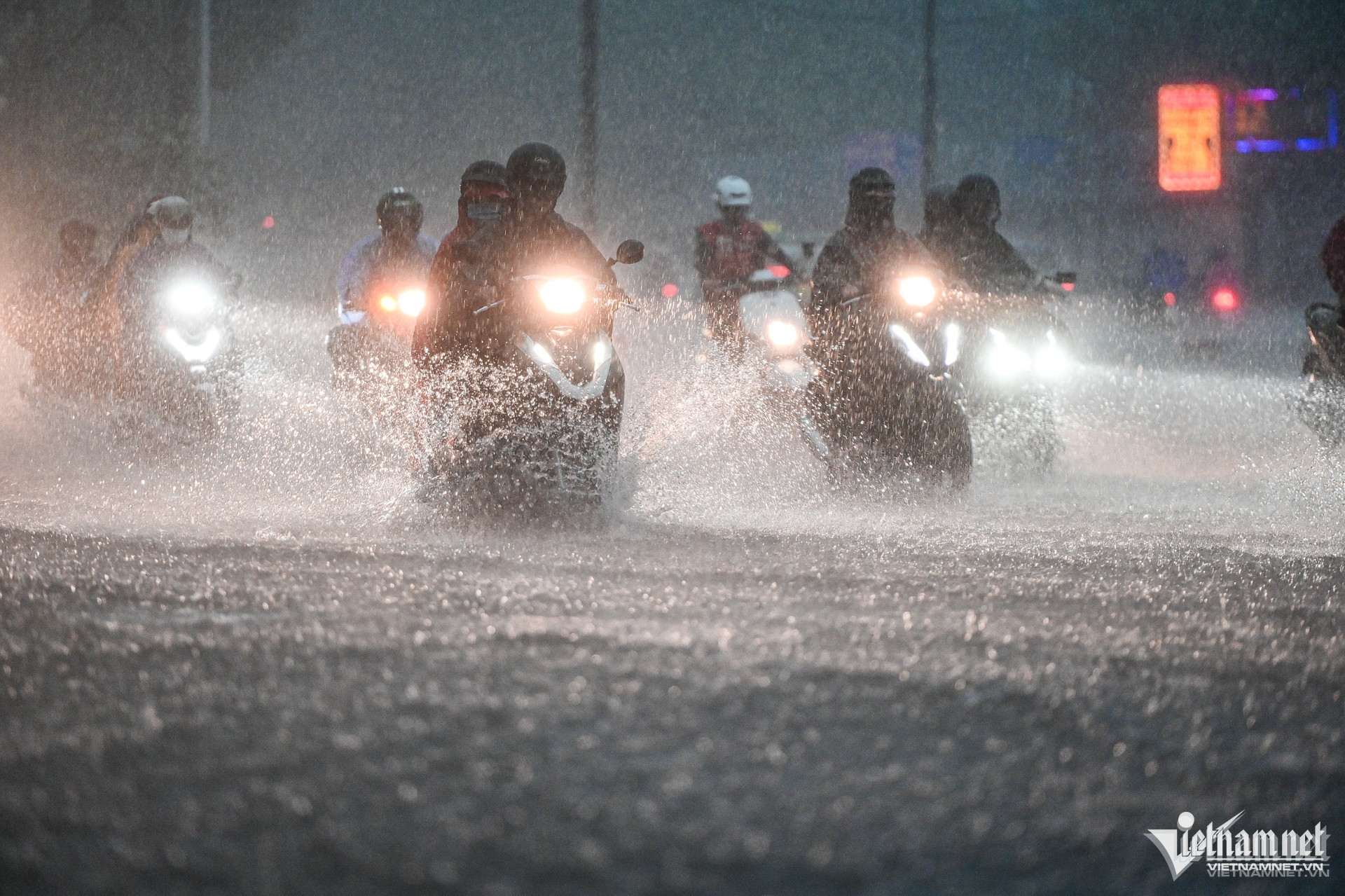
Vu Anh Tuan, Deputy Head of Weather Forecasting at the National Center for Hydro-Meteorological Forecasting, has issued a warning about widespread heavy rain in the north and localized downpours in the Central Highlands and the South.
As of May 20, scattered showers and thunderstorms have already been reported in the Central Highlands and southern Vietnam. These areas are expected to continue experiencing scattered showers and localized heavy rain in the late afternoon and evening, with rainfall amounts ranging from 10-30mm and possibly exceeding 50mm in some locations.
On May 21, rainfall is expected to intensify in the Central Highlands and southern provinces, with totals ranging from 20-40mm and potentially surpassing 70mm.
Meanwhile, scattered showers and localized thunderstorms are forecast in the northern region during the evenings of May 20 and 21.
More significantly, Mr. Tuan emphasized that from the night of May 22 to May 24, the northern region is likely to experience a period of moderate to heavy rain and thunderstorms. Localized downpours could bring total rainfall between 70-150mm, with some areas exceeding 250mm.
From the evening of May 23 through the night of May 24, the north-central region is also forecast to experience moderate to heavy rain, with totals ranging from 40-100mm, and some areas potentially exceeding 150mm.
“There is a risk of intense rainfall exceeding 80mm in just three hours,” Mr. Tuan warned.
Elsewhere, local hot spells are affecting areas from Nghe An to Phu Yen today. Forecasts for May 21-22 show widespread heat with highs of 35-37°C, possibly above 37°C in some spots, and relative humidity dropping as low as 50-55%.
From May 23 onward, the heat in these areas is expected to subside.
Meteorological experts have cautioned that thunderstorms may bring whirlwinds, lightning, hail, and strong winds. Localized heavy rain could trigger flash floods in small rivers and streams, landslides on steep slopes, and urban flooding in low-lying areas.
Due to the combined effects of heat and low humidity, there is a heightened risk of fires and explosions in residential areas, as electricity consumption surges. The threat of forest fires also increases.
Furthermore, prolonged exposure to high temperatures may lead to dehydration, exhaustion, or heatstroke.
It’s important to note that the forecast temperatures in official bulletins may differ from real outdoor conditions by 2-4°C, or even more, depending on the ground surface, such as concrete or asphalt.
Residents and local authorities are urged to remain vigilant and take proactive measures against extreme weather conditions.
Bao Anh